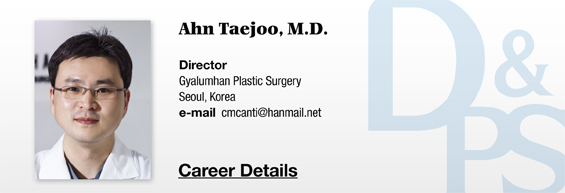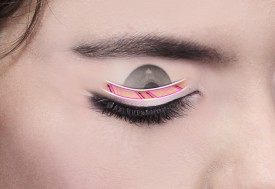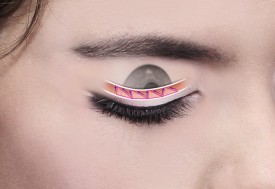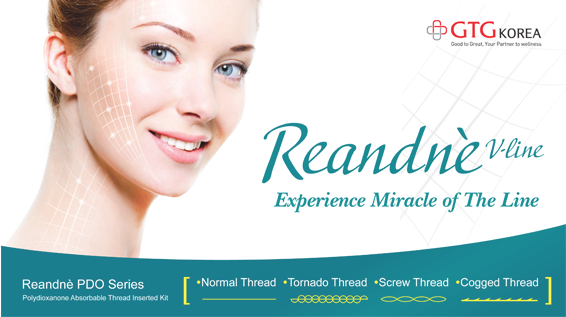
To solve this problem, the levator aponeurosis is anchored again at the dermis after the levator aponeurosis is anchored onto the tarsal plate (Invagination technique). The direction of the pull on the fold is another important factor. Anchoring the skin above the inner layer may create a deeper and stronger fold. Anchoring below the inner layer can create a more natural, yet weaker fold. However, anchoring below is more likely to result in a bumpy line (Figure 3).

Figure 3. How the direction of the pull can change the depth of the resulting fold.
More patients prefer quick recovery and choose partially incisional or non-incisional blepharoplasty. Non-incisional surgery results in a natural outcome with little scarring. The strength of the fold can also be adjusted based on how the skin is anchored. However, little scarring also means a weaker fold that is more likely to come undone in the long term. I categorize the non-incisional blepharoplasty procedures as follows; 1) loop, 2) square, and 3) triangle techniques. Among these I prefer the triangle technique because it allows me to reduce the pressure on the soft tissues while increasing the vector of the inward pull. This also has the benefit of causing less irritation to the conjunctiva (Figure 4).


Figure 4. Comparison of square and triangle non-incisional blepharoplasty.
I would like to emphasize that the double eyelid surgery does not fundamentally enlarge the eye opening. Many patients tend to think that double eyelid surgery will make their eyes bigger. I think this misunderstanding stems from looking at Caucasian eyes which are larger and have a fold on the upper eyelid. In eyes without the fold in the upper eyelid, the gray line (upper eyelid’s border) below the lash is hidden but it becomes visible when the fold is created and tissues are pulled up. That is, the procedure can make the gray line visible but does not lift it from its original place. Even with a thick fold, the border of the upper eyelid does not get raised. If the goal is to raise the upper eyelid, ptosis correction can be used to strengthen the upward pull when the eye is open.
[Advertisement] Reandnè Thread Series – Manufacturer: GTG KOREA(www.gtgkorea.com)
-To be continued




















